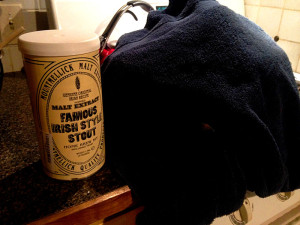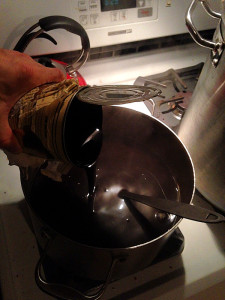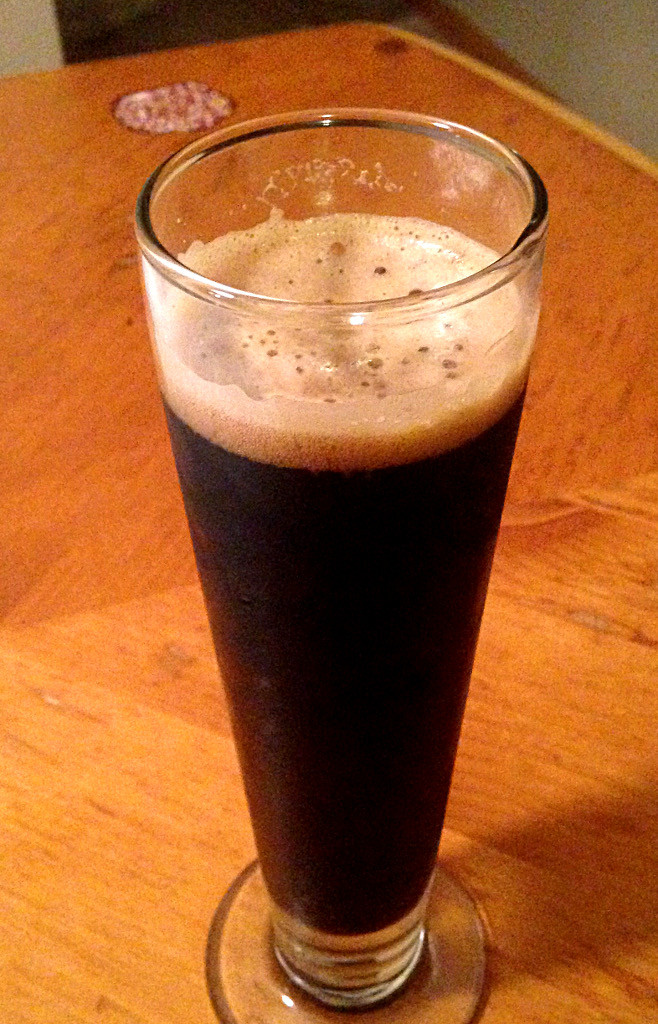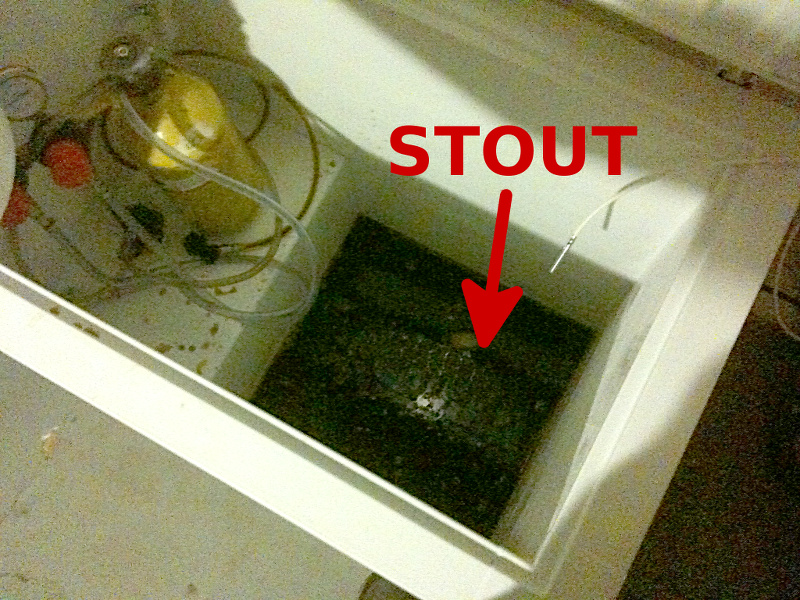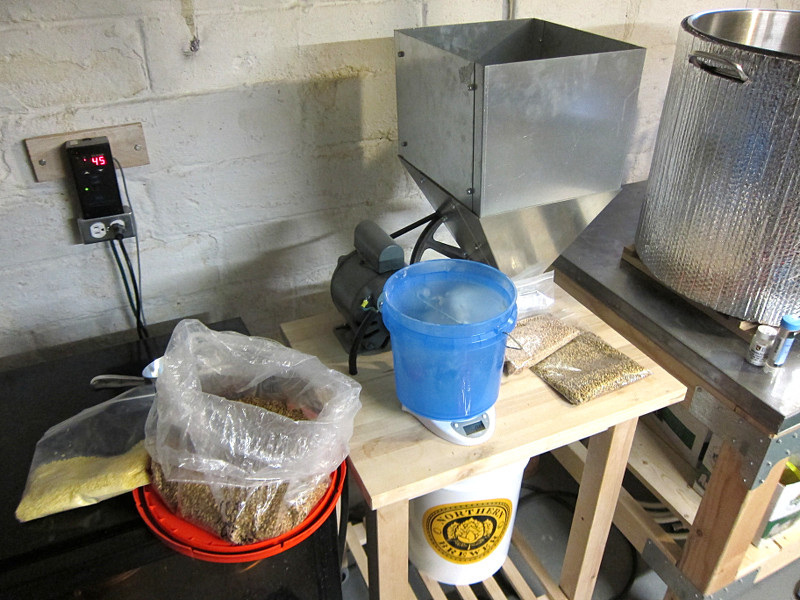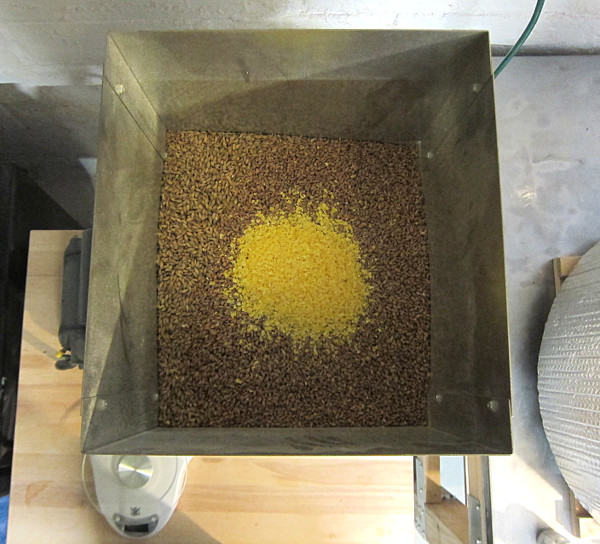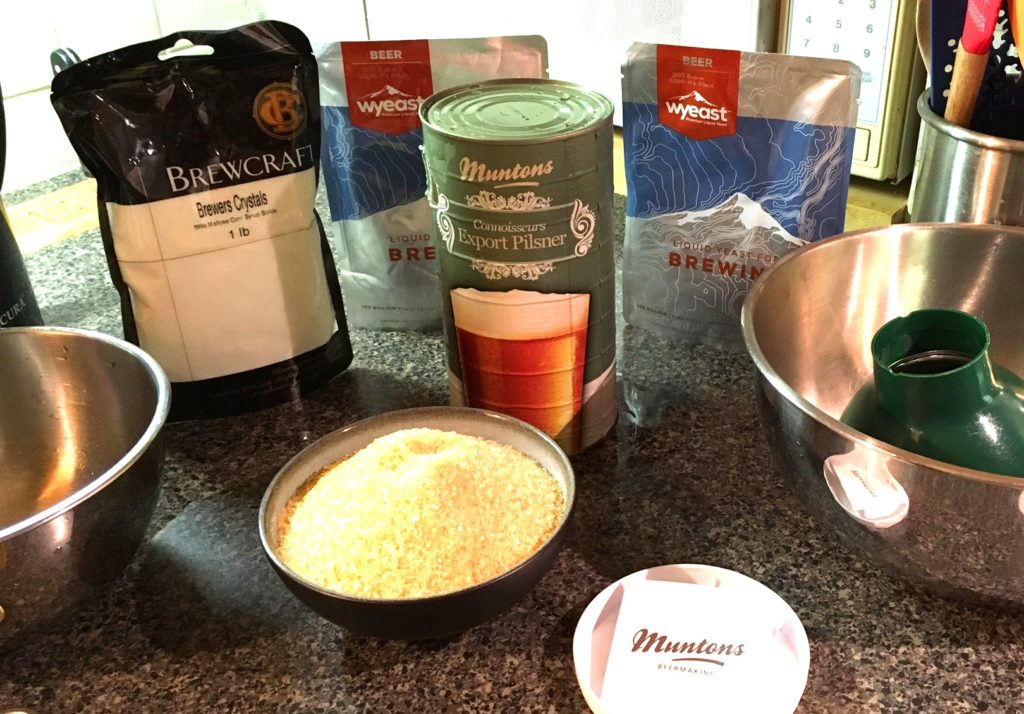 What if we took what some would consider mediocre ingredients and tried to make great beer from them? Let’s see:
What if we took what some would consider mediocre ingredients and tried to make great beer from them? Let’s see:
The Recipe
Name: Muntons Connoisseurs Export Pilsner
Batch size: 4.75 gallons
Expected OG: 1.050
Expected IBU: ??
Mash: none
1 can Muntons Connoisseurs Export Pilsner hopped extract kit
1.0 lb Brewers Crystals
1.0 lb Turbinado sugar
Yeast nutrient
2 packs Wyeast 2000 Budvar Lager
Notes
This isn’t a total slum-brew since we’re not just using 2 lbs of table sugar. Instead, we had some Brewers Crystals lying around which we decided to use. These look like corn sugar (dextrose) and are in fact made from corn, but mimic the fermentability profile of regular barley wort by containing mostly maltose and some unfermentable sugars. They boost alcohol without losing body.
We’re also using Turbinado sugar because why not; maybe they’ll add some interesting flavors to an otherwise lower-gravity kit. It might turn out that the flavor doesn’t quite work in what’s supposed to be a pretty clean beer, but we’re hopeful.
We hit 1.052 original gravity and lazy-chilled to 53°F before pitching 2 packs of Wyeast Budvar Lager. We did not aerate, though we probably should have. 10 days after pitching we raised the temperature to 63°F for a diacetyl rest and to help the yeast finish the ferment. 11 days after pitching the gravity had dropped to 1.018, and 16 days after pitching it was still dropping at 1.016. We haven’t checked it again yet but we’d like to end somewhere around 1.013. Whenever it’s done, we’ll cold-crash for a few days then rack over to a serving keg for the lagering process.
3/26/2017 Update
It finished at 1.014 and tasted like Chardonnay during kegging. We’re not sure if that’s due to lager yeast not liking Turbinado sugar or what. It cleaned up in the keg, but it still has a wine-like taste when it gets warm. But serve it chilled at 35 degrees and it’s kinda like Grain Belt: kinda-not-really hoppy, with a slightly sweet finish. It’s actually not bad for what it is, but we were hoping for a cleaner beer.
Next time: maybe use Pils malt extract or dextrose instead of Brewer’s Crystals and Turbinado.
